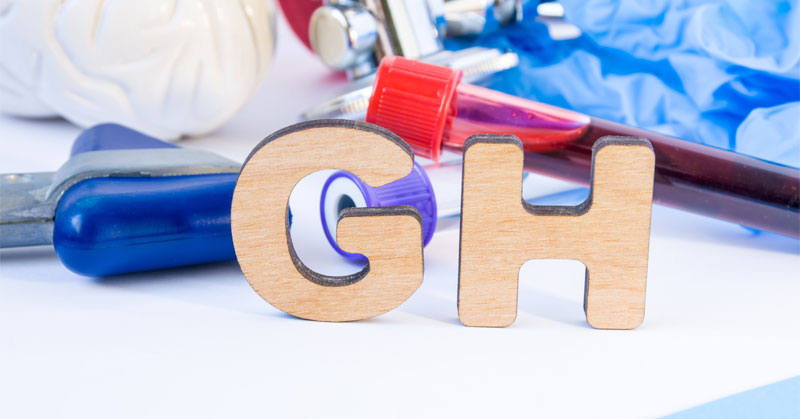The Most Effective Hormone Replacement Therapies

Ipamorelin and sermorelin can be prescribed separately, or sometimes may be combined with one another.
Both are what is known as GHRPs, or growth hormone releasing peptides, sometimes also referred to as human growth hormone-releasing hormones, (GHRH) or growth hormone releasing factors (GHRF).
Sermorelin and Ipamorelin, together or alone are both used to treat adult patients suffering from growth hormone deficiencies by stimulating the production and release of HGH.
Recent studies have found that GHRFs such as sermorelin and ipamorelin, can be preferable to direct injections of growth hormone, in certain patients, because they cause the body to release growth hormone in a way that is more concurrent with normal bodily functions.
Growth hormone is released in a series of spurts or pulses throughout the day. These pulses, which peak in the evening, promote sleep, healing, exercise recovery, and cellular regeneration.
Current research seems to suggest that, the decline in human growth hormone (HGH) levels in the blood as we age, is related less to a decreased production of HGH, and more to fewer “pulses.”
Since growth hormone-releasing peptides such as sermorelin and ipamorelin act by stimulating receptors in the pituitary to release HGH, they produce a more “natural” increase in HGH level.
Both ipamorelin and sermorelin are prescription medications used to treat men and women who are facing the symptoms of growth hormone deficiency (GHD).
Sermorelin and Ipamorelin are very similar compounds. They are both long chain peptides that basically differ only in the number and make-up of amino acids in the chains.
Sermorelin and Ipamorelin are man-made (synthetic) versions of a GHRH known as Ghrelin, which is naturally produced by your body, which stimulates the production and release of HGH. Growth hormone-releasing peptides, such as ipamorelin and sermorelin are large-chain hormones that differ from one another only in the number of amino acids in the peptide chain.
Both ipamorelin and sermorelin are medications that are made to duplicate the action of Ghrelin. Ghrelin is a 28-amino-acid peptide, which like ipamorelin and sermorelin, acts to increase growth hormone secretion.
Both ipamorelin and sermorelin stimulate the secretion of human growth hormone with few if any negative side effects. They differ only in the length of their respective amino acid chains, and therefore, they interact with different receptor sites in the brain and pituitary.
Alone, either has been proven effective in treating adults with low-level GHD. There is also current research that since they do effect different receptor sites in different ways, there could be some benefits to be had in combining the two therapies.
As stated above, either sermorelin or ipamorelin can be used to treat individuals with sub-optimal levels of HGH in the blood. Since they both are designed to boost your body’s level of HGH, they effectively have the same benefits. The differences basically lie in the different hormone receptors they react with to stimulate HGH production and release. Because of those different receptors, they can stimulate different volumes of release, over different periods of time.
The following chart compares Sermorelin Therapy to Ipamorelin Therapy.
|
Ipamorelin Therapy
|
Sermorelin Therapy
|
|
|
Ideal age range of patients |
Best used for patients from 30 – 50+ or those individuals with low IGF-1 levels |
Best used for patients from 30 – 50+ or those individuals with low IGF-1 levels |
|
How many times a day |
Once or twice daily depending on specific physician instructions |
Once daily at night before bedtime |
|
How long do I have to take (months) |
Minimum 9 months and as long as 12 months |
Minimum 9 months and as long as 12 months |
|
How long will results last |
Once you complete a full nine months of growth hormone therapy, results should last for several months after you last injection. |
Once you complete a full nine months of growth hormone therapy, results should last for several months after you last injection. |
|
Approximate cost per month |
$400 to $750 per month |
$400 to $750 per month |
|
Covered by insurance |
Usually not |
Usually not |
|
How is it administered |
Subcutaneous Injection |
Subcutaneous Injection |
|
Do I need a prescription |
Yes |
Yes |
As you can see, either therapy can be effective, but certain patients could benefit from a combined sermorelin/ipamorelin regimen. Combined therapy has great benefit, because it can create a more regular pattern of HGH “pulses.”
Both ipamorelin and sermorelin stimulate the secretion of human growth hormone with few if any negative side effects.
Sermorelin has been studied and shown to be effective in treating age-related growth hormone decline when used in combination with another GHRH, such as ipamorelin. Sermorelin combined with a pre-determined dose of ipamorelin has been shown to produce a longer-lasting and more effective pulse of HGH.
Recent studies have found that concurrent administration of sermorelin and ipamorelin is proven to provide a synergistic release of HGH from the pituitary.
Patients who are displaying signs of aging and have both low HGH levels as well as low IGF-1 levels, are the most suitable candidates for combined sermorelin/ipamorelin treatment. Sermorelin/ipamorelin therapy has been shown to be effective in raising growth hormone levels, as well as insulin like growth factor–1(IGF-1), which in turn helps to:
Whether alone or together, sermorelin and ipamorelin are given as injection therapy, and are only available with a doctor’s prescription.
Studies have shown that sermorelin combined with ipamorelin can produce longer-lasting and more effective releases of HGH.
Contact us to begin the process of getting your prescription for sermorelin or ipamorelin therapy today, and you will be taking your first steps to a healthier tomorrow!